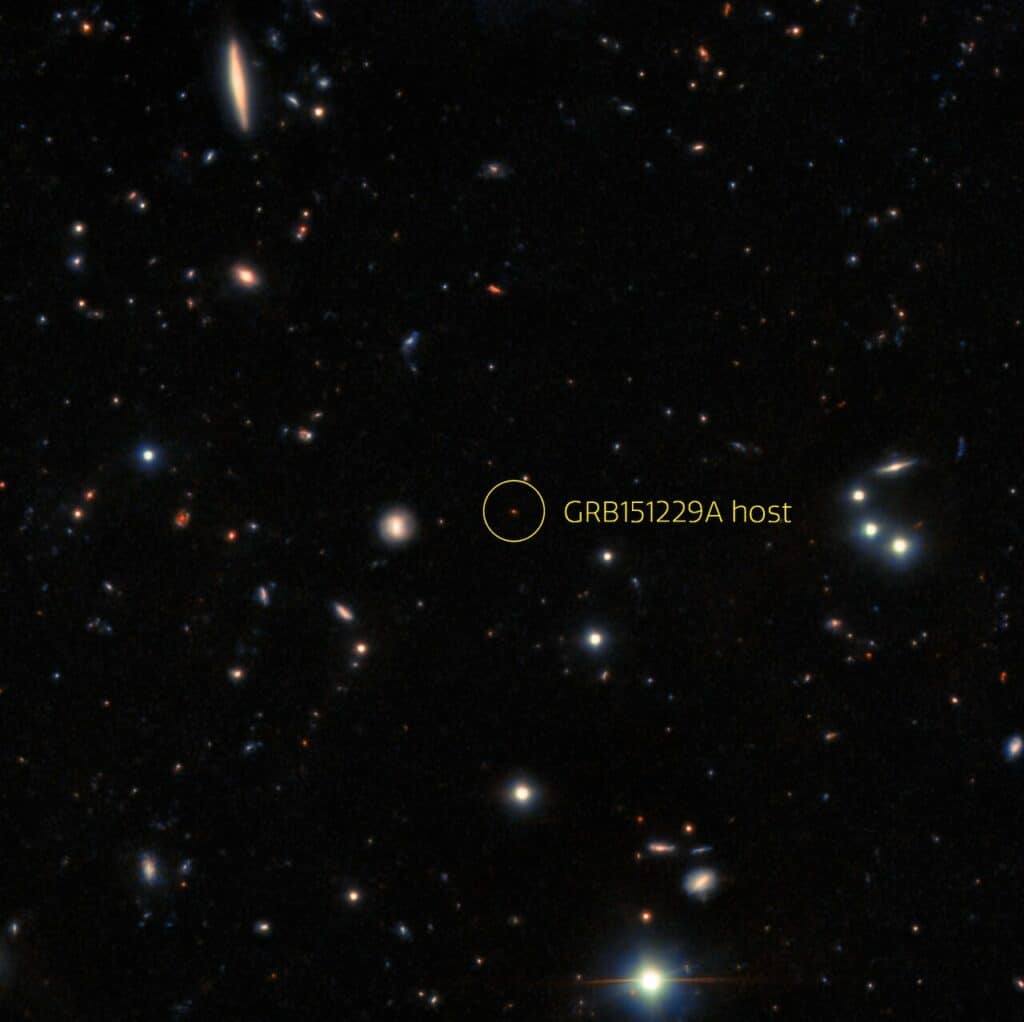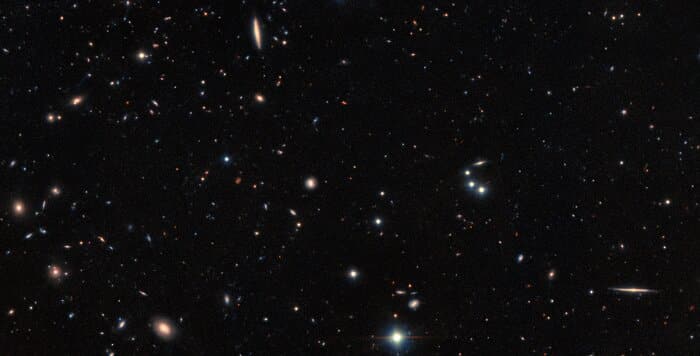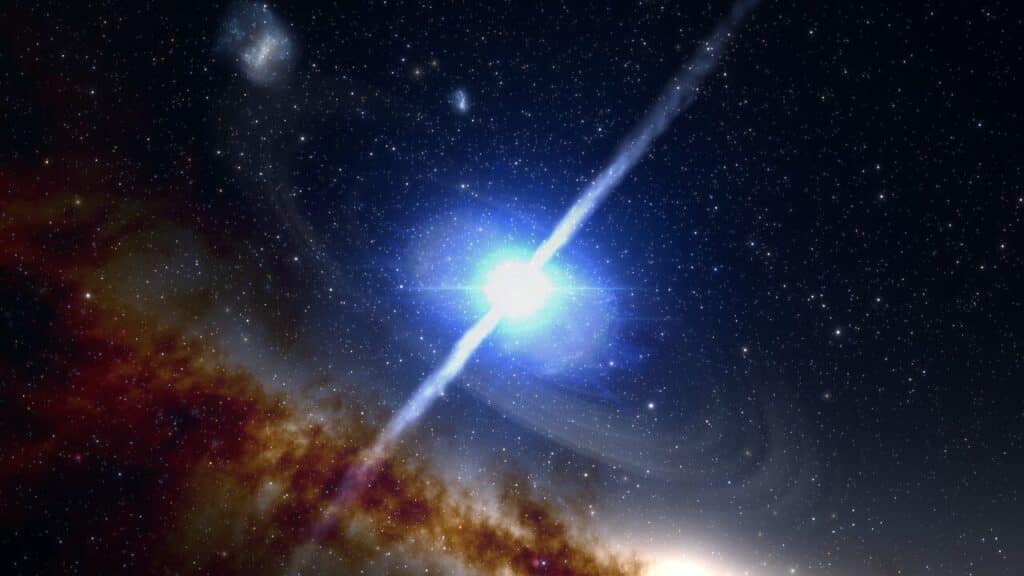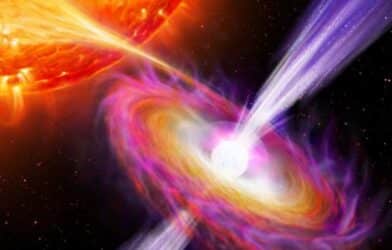An international team of astronomers have solved the mystery of the origin of some gamma-ray bursts. They found that these GRBs come from a population of distant galaxies, with some nearly 10 billion light-years away.
Previously, astronomers thought certain GRBs originated as castaways in the vastness of intergalactic space. The bursts initially appeared as lonely flashes of intense energy far from any obvious galactic home.
However, using powerful telescopes on both Earth and space, astronomers discovered GRBs occurred in distant and faint galaxies. Astronomers now believe that short gamma-ray bursts, which form during the collisions of neutron stars, may have been more common in the past than expected. Because neutron-star mergers forge heavy elements like gold and platinum, the universe may have been seeded with precious metals earlier than previously thought.
“Many short GRBs are found in bright galaxies relatively close to us, but some of them appear to have no corresponding galactic home,” says study first author Brendan O’Connor, an astronomer at both the University of Maryland and the George Washington University, in a media release. “By pinpointing where the short GRBs originate, we were able to comb through troves of data from observatories like the twin Gemini telescopes to find the faint glow of galaxies that were simply too distant to be recognized before.”

The Swift’s Burst Alert Telescope and Swift’s X-ray Telescope aboard NASA’s Neil Gehreis Swift Observatory captured 120 GRBs. Astronomers analyzed data from these GRBs and were able to identify the general location of the GRB’s X-ray afterglow. Lowell Observatory conducted additional afterglow studies and more accurately pinpointed the location of the gamma-ray bursts.
These afterglow studies reveal that 43 of the short GRBs were not associated with any known galaxy and appeared in the empty space between galaxies. “These hostless GRBs presented an intriguing mystery and astronomers had proposed two explanations for their seemingly isolated existence,” notes O’Connor.
One hypothesis astronomers bandied about was that the progenitor neutron stars formed as a binary pair inside a distant galaxy, drifted together into intergalactic space and eventually merged billions of years later. Scientists say a second hypothesis states that the neutron stars merged many billions of light-years away in their home galaxies, which now appear extremely faint due to their expansive distance from Earth.
“We felt this second scenario was the most plausible to explain a large fraction of hostless events,” explains O’Connor. “We then used the most powerful telescopes on Earth to collect deep images of the GRB locations and uncovered otherwise invisible galaxies 8 to 10 billion light-years away from Earth.”

Their findings could help astronomers better understand the universe’s chemical evolution. Scientists say, when neutron stars merge, it triggers a cascading series of nuclear reactions that are necessary to produce heavy metals, like gold, platinum and thorium. Their results now push back the cosmic timescale on neutron-star mergers, meaning that the young universe was far richer in heavy elements than previously known.
“This pushes the timescale back on when the universe received the ‘Midas touch’ and became seeded with the heaviest elements on the periodic table,” says O’Connor.
The study is published in the journal Monthly Notices of the Royal Astronomical Society.












-392x250.png)